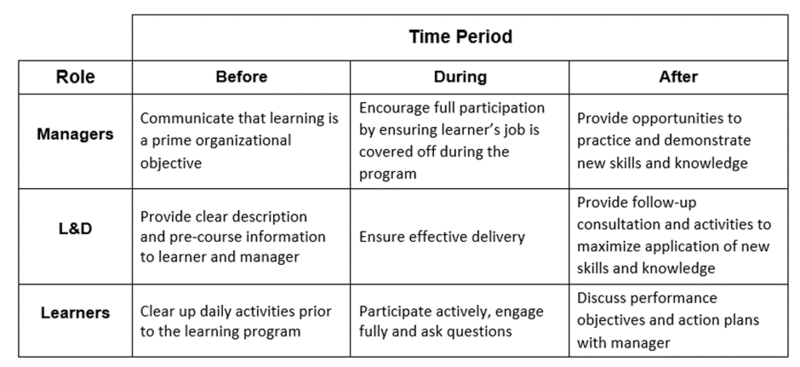ATD Blog
All Aboard: 6 Ways to Get Business Leaders on Board With Your L&D Initiatives
Thu Oct 31 2019

My aim is to present practical ideas about engaging business leaders in creating shared ownership for change and growth and to set the foundation for measuring the effects of learning.
This is a practitioner’s perspective aimed at a typical L&D executive responsible for scoping, creating, and executing learning programs to create business outcomes. Here are some ideas for how to keep the focus on what you can do given your circle of influence.
1. Earn Your Entitlement
Many of the L&D folks I have interacted with do not make the time or effort to gain a deeper understanding of the community they serve. If you’re in charge of L&D in a manufacturing function, for example, sweat it out on the floor without air conditioning. If it’s sales training you are looking after, hit the streets with your sales team. Experience the business function you intend to influence. By doing so, you will collect insights on the barriers, challenges, and possibilities your team is facing, which will help you build strong relationships along the way. You’ll demonstrate empathy. Empathy earns you respect, and respect earns yourself-determination. his allows you to assert your agenda and create a different narrative of what L&D brings to the table.
2. Change Management Practice
Before you create a new learning initiative, you will need to create a new management practice. And changing any management practice begins with redefining roles and relationships. All three parties—the learner, the manager, and the learning facilitator—need to become equal stakeholders in the process and the outcome. This change just like with any Standard operating procedure, needs documentation of the process and agreement from the parties. Doing so will redefine the status of the business and department from internal customer to an equal learning stakeholder.
3. Learning Event Versus Learning Journey
Integral to the SOP mentioned in the second point is to craft, share, and agree on a mechanism that makes every learning initiative a journey as opposed to just an event. This can be done by creating your own learning transfer matrix.
This popular, universally applicable template can be used and modified to suit your needs. It doesn’t require any training or certification, just rigor of application. Below is a template you can use to edit or expand if need be.
Table 1. Learning Transfer Matrix Template

4. 80 Percent Go or No Go
One way to get line managers involved before the program begins (top left corner of the matrix) is to have them complete a checklist. What if you make it mandatory for least 80 percent of the managers to complete the checklist before a program can go ahead?
To deal with the pushback, the time and effort you invested in creating self-determination (refer to the first point) will come in handy. This process of mandating manager engagement before training is a potential game changer in creating shared ownership.
5. Managerial Coaching
Apart from engaging managers in creating learning outcomes and commitment for monitoring, L&D professionals need to teach them how to create these materials and ideas.
You can’t assume that all managers are automatically capable of this. Prior to launching any initiative, many managers will need to be coached before they can become coaches themselves and guide their teams on the actions they commit to.
6. Gamification and Reward for Managers
If the cog that holds the learning transfer wheel together is ultimately the manager, shouldn’t they be the one whose efforts need to be gamified and recognized as much as the learner?
Imagine a leader board for learners running concurrently with a leader board for managers. If the top two to three managers on the board correspond to the top two to three learners on the board, that should be all the catalyst you need for other departments or the business to support the new learning culture you’ve created.
Do you have any questions about how to get managers on board with your L&D initiatives? Use the comments to share any queries or feedback.
